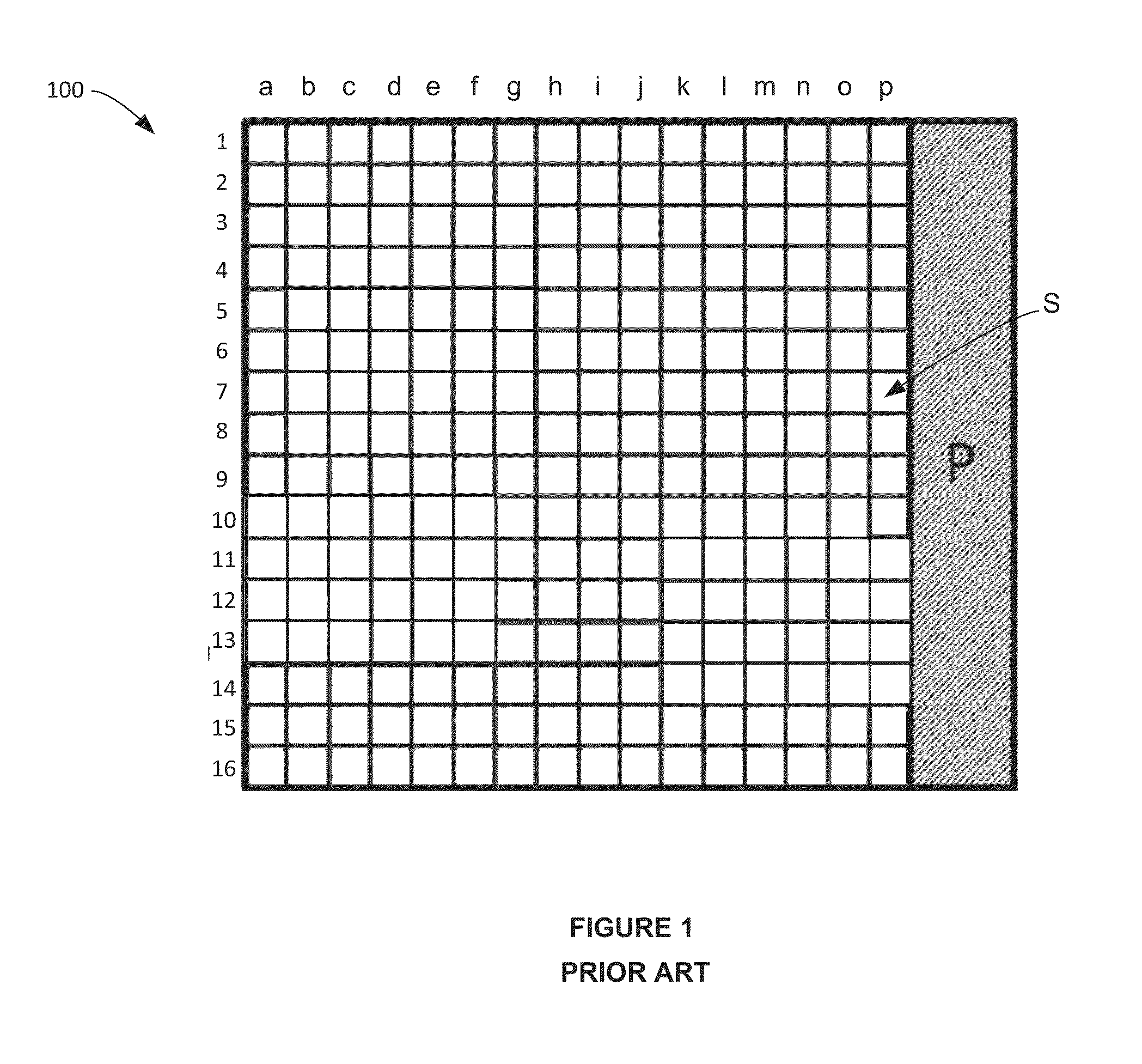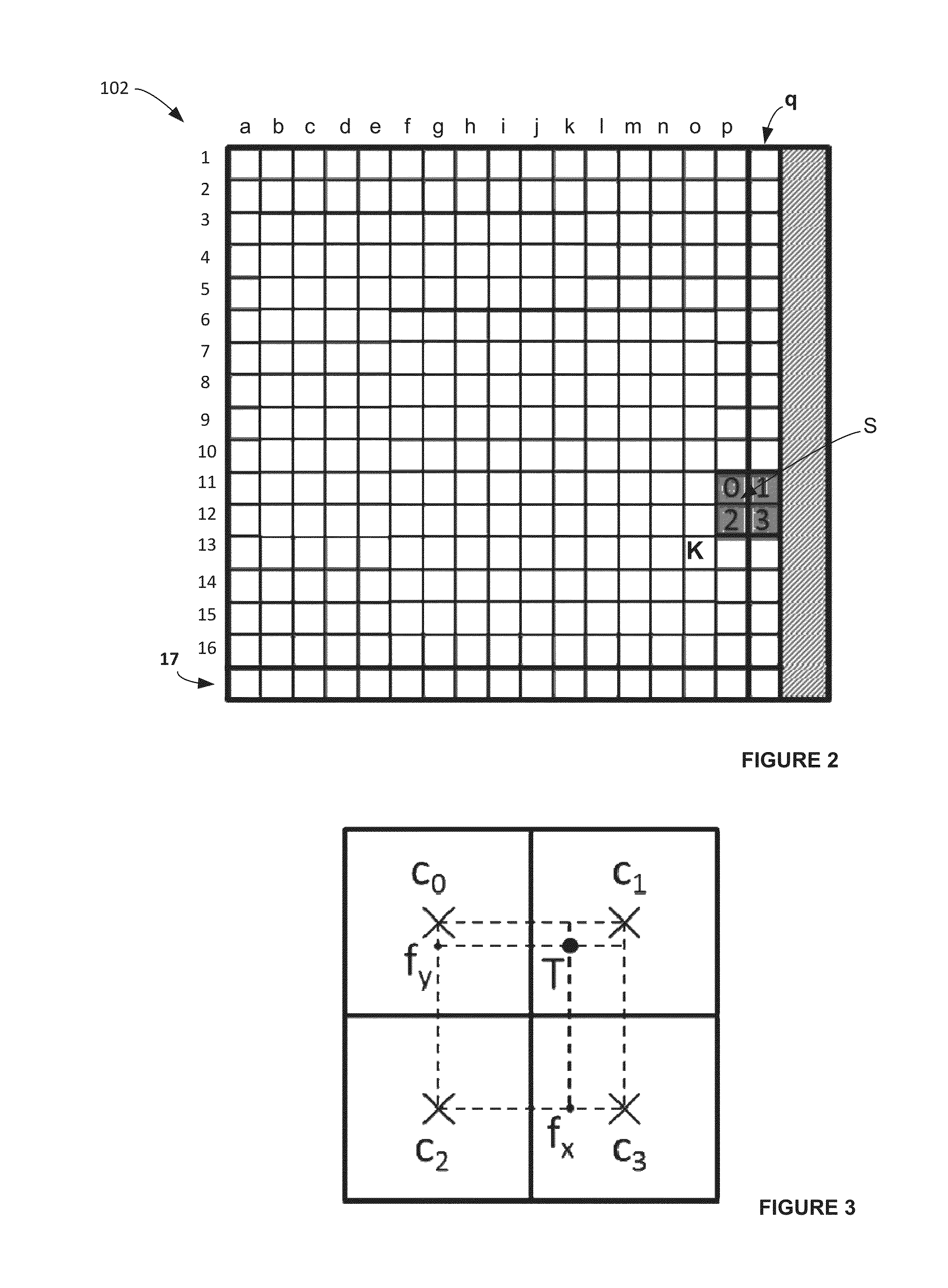Method and system for expediting bilinear filtering
- Summary
- Abstract
- Description
- Claims
- Application Information
AI Technical Summary
Benefits of technology
Problems solved by technology
Method used
Image
Examples
Embodiment Construction
[0047]The present document describes a method and system for expediting bilinear filtering of textures, by reducing the number of data load operations. The method expands the original data layout with additional borders containing replicated texels. The replicated texels correspond either to texels of opposite edges for two-dimensional textures or neighboring faces in cube textures. Therefore, a 2×2 filter kernel for bilinear filtering is built which requires only one texel address to be computed, with all texel data being readable with two load operations which are a predetermined stride apart. Different addressing modes are implemented by adjusting the sampling locus.
[0048]In a non-limiting exemplary implementation of the present embodiments, one or more columns and / or rows of texels are added to the outer edges of the texture layout to replicate the texel data of the opposing edge. An example is shown in FIG. 2.
[0049]FIG. 2 illustrates an exemplary layout of texture data includin...
PUM
 Login to View More
Login to View More Abstract
Description
Claims
Application Information
 Login to View More
Login to View More - R&D
- Intellectual Property
- Life Sciences
- Materials
- Tech Scout
- Unparalleled Data Quality
- Higher Quality Content
- 60% Fewer Hallucinations
Browse by: Latest US Patents, China's latest patents, Technical Efficacy Thesaurus, Application Domain, Technology Topic, Popular Technical Reports.
© 2025 PatSnap. All rights reserved.Legal|Privacy policy|Modern Slavery Act Transparency Statement|Sitemap|About US| Contact US: help@patsnap.com



